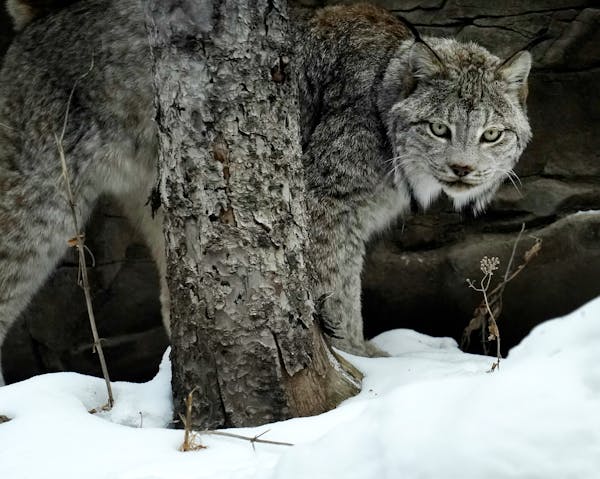One of Minnesota's rarest predators will get about $31 million of help and stay on the U.S. endangered species list for at least the next 20 years.
The U.S. Fish and Wildlife Service released its recovery plan for the Canada lynx, which are relatively abundant north of the border but survive only in a few small pockets in the United States — in northeastern Minnesota, Maine, Washington and the Rocky Mountains. While the plan lays out what would need to happen for lynx populations to survive in the United States, it concedes that they may not have much of a chance in a warming world.
Between 100 and 200 of the tuft-eared, big-pawed wildcats live in Minnesota, the southern fringe of their range. They're bolstered here through the state's connection to forests in Ontario. That allows new cats to continuously move in from the north, keeping gene pools healthy and diverse, and repopulating Minnesota after bad years.
That Canada connection has kept the state's lynx population highly resilient over the years and could keep it strong into the future, the recovery plan says. But the Fish and Wildlife Service isn't optimistic about the cat's chances to survive here in the long term.
The agency says the animal's main threat is climate change, which has hit the Upper Midwest hardest in the winter. Lynx will eat squirrels and other small forest creatures when they can get them, but their principal diet is the snowshoe hare. The wildcats go where the rabbits go, and their populations rise and fall in tandem.
Lynx are especially suited for deep snow and rely on it to hunt snowshoe hares. Their wide paws and light weight allow them to race on top of snowbanks and fresh powder after prey.
Snowshoe hare, like ruffed grouse and whitefish, go through natural cycles of abundance and scarcity.
As winters continue to warm, the snow season is becoming shorter and less consistent, and it will become harder for lynx to find and hunt snowshoe hare, according to the Fish and Wildlife Service. The predators will likely retreat north and could potentially disappear from Minnesota and other parts of their current range, the recovery plan concludes.
"Functional extirpation of several populations is likely by the end of the century," it states.
Any lynx population that survives in the United States will likely be "substantially diminished" in the coming decades, the Fish and Wildlife Service says.
The recovery plan was required to settle a lawsuit brought by the Center for Biological Diversity and other advocacy groups after the Trump administration unsuccessfully tried to remove federal lynx protections in 2019. The plan identifies several milestones that would need to be reached in order to declare the animal recovered.
The main measure, under the plan, will be to try to keep the scattered U.S. populations at their current numbers for 20 years. In Minnesota, that would mean at least 100 lynx would need to be surviving in the state in 2044 in order to consider their recovery a success.
The cats' habitat and direct connection to Canada would also have to stay intact. The plan calls for keeping at least 95% of the current lynx habitat as forest lands. A total of $31 million would be spent on monitoring populations and strengthening habitat.
Collette Adkins, a lawyer for the Center For Biological Diversity, said the group is reviewing the plan.
She said that populations in high elevations such as Yellowstone National Park and the southern Rockies could be particularly important refuges.
Lynx experts at the Minnesota Department of Natural Resources also said they were reviewing the plan and couldn't comment on what it means for the population in the state.
The Fish and Wildlife Service will accept public comments on the recovery plan until the end of January.
In 2022, the Star Tribune reported on the plight of the Canada lynx in its "Vanishing North" series about the biodiversity crisis.
Wolves vs. Nuggets is set. Here's everything we know about Round 2.

Gun safety bills may hinge on one senator's fate despite House support, likely passage

At the U, another pro-Palestinian protest camp goes up

Falcon Heights, St. Anthony nearing police partnership severed after Philando Castile's killing


